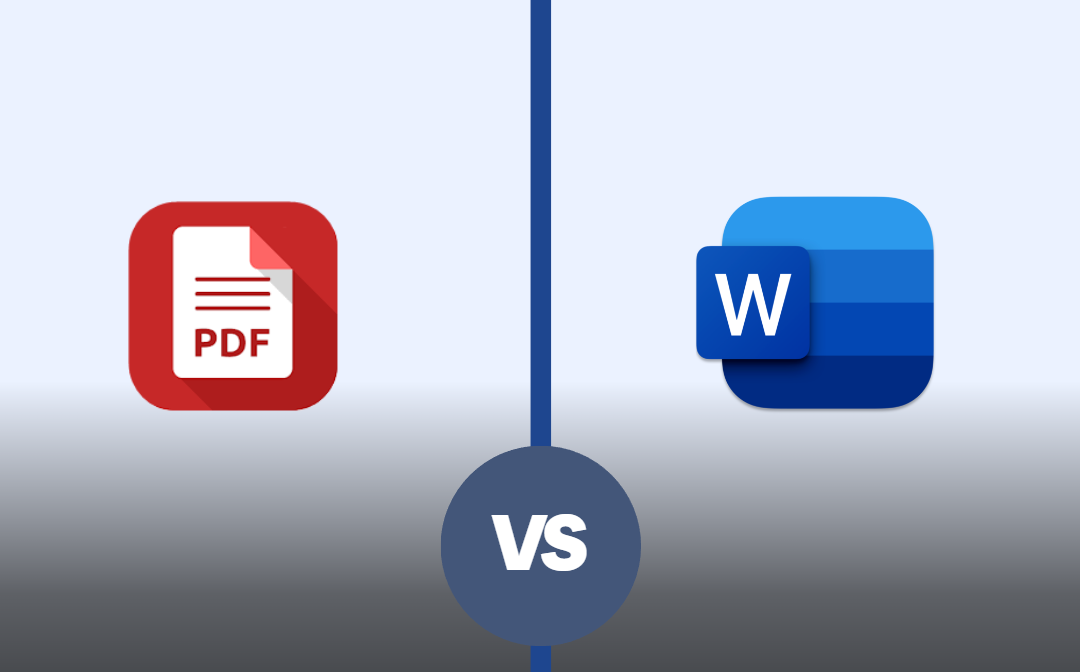One aspect that is often overlooked in the competitive landscape of job applications, yet significantly crucial, is the format of your Curriculum Vitae (CV). A CV is your first introduction to potential employers, displaying your skills, experiences, and overall suitability for a position. Hence, your chosen format is integral to how this information is perceived and processed.
In this context, two formats often come to the forefront: Portable Document Format (PDF) and Microsoft Word (DOC or DOCX). Both are widely used and accepted, but each has unique features and peculiarities that could affect your CV's overall impact. The choice between PDF and Word might seem insignificant at first glance. Still, it can have profound implications on how your application is received by potential employers or the Applicant Tracking Systems (ATS) they use. So, let's start this journey to increase the effectiveness of your job application, one format at a time.

Understanding the PDF and Word Formats
Understanding the fundamental differences between PDF and Word formats is essential to decide the right choice for your CV.
PDF (Portable Document Format)
Developed by Adobe, PDFs are designed to maintain a document's exact formatting and layout, regardless of what device or software it is viewed on. So the content of your CV, including fonts, images, and layouts, will appear exactly as you designed them, offering a consistent viewing experience. PDFs can be opened using free software such as Adobe Acrobat Reader, and many web browsers also support viewing PDF documents.
However, while this consistency is a strength, it can also be a drawback. PDFs are only easily editable with specific software. Though many modern ATS systems can parse PDFs, some older systems might need help with this format, potentially causing issues with how your information is processed.
Microsoft Word
Word documents, commonly seen with the extensions .doc or .docx, are the standard output from Microsoft Word, part of the Microsoft Office suite. Unlike PDFs, Word documents are designed to be easily editable. This feature can be advantageous when tailoring your CV for different job applications.
Furthermore, Word documents are generally more compatible with ATS systems. They are built to be easily parsed, meaning the system can quickly pick out essential information like your name, contact information, and employment history.
On the downside, Word documents can vary in appearance between different devices, operating systems, and versions of Microsoft Word. What looks perfect on your screen might appear disorganized or misformatted on another, potentially impacting the readability of your CV.
The Case for Word
Choosing the Word format for your CV comes with certain advantages and considerations. Here's why you might lean towards a Word document:
Editability and Compatibility with ATS
One of the main benefits of Word documents is their editability. Word allows you to easily change any aspect of your document, making it simple to tailor your CV for each application. This is particularly helpful when highlighting specific skills or experiences more relevant to a particular role.
Furthermore, Word documents are highly compatible with Applicant Tracking Systems (ATS). Many companies use these systems to automate the initial screening of job applications, parsing CVs to pick out essential information. These systems can generally read and interpret a Word document more accurately.
For example, consider the case of John, a job seeker applying for a role at a large corporation that uses ATS. John found that he received more positive responses when he submitted his CV in Word rather than PDF, likely because the ATS could more accurately parse his Word document, matching his skills and experience with the job requirements.
Potential Downsides to Word Format
While Word has its benefits, it has drawbacks. Word documents can exhibit formatting inconsistencies when viewed on different devices, operating systems, or versions of Word. This means that careful formatting on your end might appear jumbled or disorganized on the recruiter's end, which can detract from the professionalism of your application.
The Case for PDF
Choosing the PDF format for your CV also presents its unique benefits and considerations. Here are the reasons why you might opt for a PDF:
Consistent Formatting Across Devices
The primary advantage of using PDF for your CV is its consistency. Creating a PDF retains precisely the same formatting and layout you set, irrespective of where or how it's opened. This is crucial for CVs, where layout, design, and presentation can significantly impact first impressions.
For instance, consider the example of Jane, a graphic designer applying for a creative agency job. Jane put considerable effort into her CV's design, making it visually appealing to reflect her skills. She chooses PDF format to ensure that her design appears precisely as intended on the recruiter's screen, regardless of their device or software. The agency appreciates Jane's attention to detail and capability, leading to a successful application.
Potential Downsides to PDF Format
While the consistency of PDFs is a significant benefit, it's worth noting that this format may sometimes be incompatible with older ATS systems. Some systems struggle to accurately parse information from PDFs, leading to potential discrepancies when processing your application. Although this is less of an issue with more modern systems, it's still worth considering, especially when applying to larger organizations that may use older software.
Additionally, PDFs are less easily editable than Word documents. While this won't matter to the recipient of your CV, it can be a minor inconvenience if you need to update your CV regularly. There are software options to edit PDFs, but these often come at a cost, unlike the freely editable Word format.
Comparing and Contrasting Word and PDF
Now that we've examined the pros and cons of both Word and PDF formats, let's delve into a direct comparison to give you a clearer picture.
Consistency vs. Editability
One of the critical distinctions between PDF and Word is the balance between consistency and editability. PDF ensures your CV will look exactly as you intended on any device or platform. This is particularly beneficial if your CV includes complex formatting or design elements that could be disrupted in Word.
On the other hand, Word shines when it comes to editability. If you frequently tailor your CV to individual job applications, the ease of making changes in Word might outweigh the risk of minor formatting inconsistencies.
Compatibility with ATS
Modern ATS systems can generally read both formats. However, Word tends to have the edge in compatibility, especially with older ATS software. If you're applying to a large corporation or an organization that might use older software, Word might be a safer bet. However, if the job posting mentions explicitly that PDFs are acceptable or preferred, this indicates their ATS can handle the format.
Helpful Tips When Applying for Jobs
When it comes to job applications, the format of your CV is just one piece of the puzzle. Here are a few additional tips to make your application process more efficient and effective:
1. Customizing Your CV
As mentioned earlier, tailoring your CV to each application is advantageous. Highlight the skills and experiences most relevant to the job description. This shows that you're a strong fit for the position and demonstrates your interest and initiative.
2. Search for Recruiter's Email
One way to make your application stand out is to send your CV directly to the recruiter or hiring manager. Use LinkedIn, the company website, or other professional networks for contact information. But remember, professionalism is key. Use this method judiciously and respect the recipient's time.
3. Use Chrome Extension
There are numerous Chrome extensions designed to streamline your job search. Some help you quickly save job postings, others enable you to track your applications, and there are even extensions that assist in finding email addresses. For instance, an extension like SignalHire can help locate the recruiter's email on LinkedIn or a company's website. If you're converting your CV into a different format, extensions such as "Save as PDF" can be helpful.
Using these tools can help make the application process more efficient and effective.
4. Follow Instructions
Lastly, always follow the application instructions given in the job posting. If the recruiter asks for a specific format, use it. If they request certain information, ensure you include it in your CV. Ignoring these instructions can suggest that you don't pay attention to details, which might lead to your application being rejected.
Final Thoughts
Choosing the proper format for your CV - Word or PDF - hinges on the specific requirements of the job application and your individual needs. Both have their merits: Word for its editability and compatibility with ATS and PDF for its consistent formatting across devices.
Leveraging tools like SignalHire for finding recruiter emails and other Chrome extensions can further streamline your job application process. Ultimately, the goal is to present your skills and experiences professionally and effectively, increasing your chances of landing your desired role.










